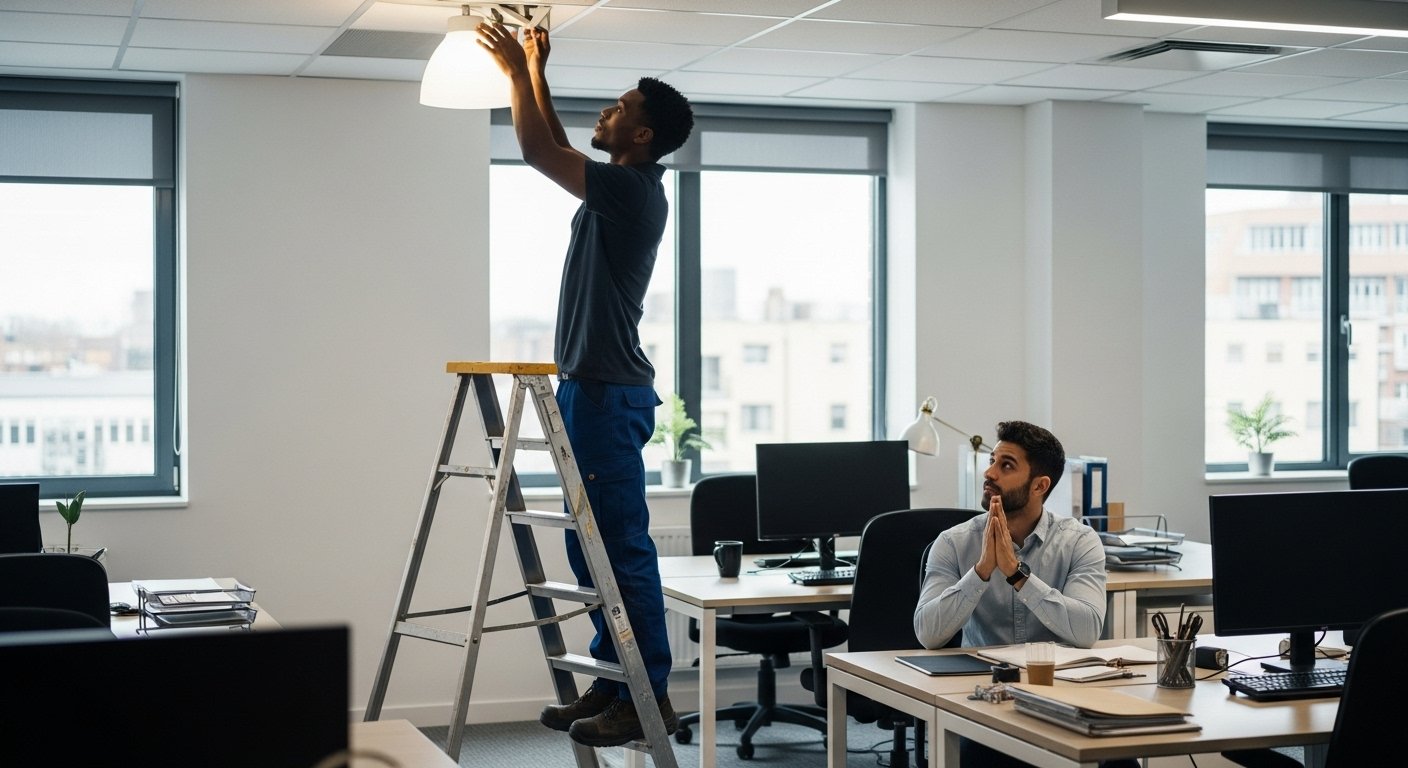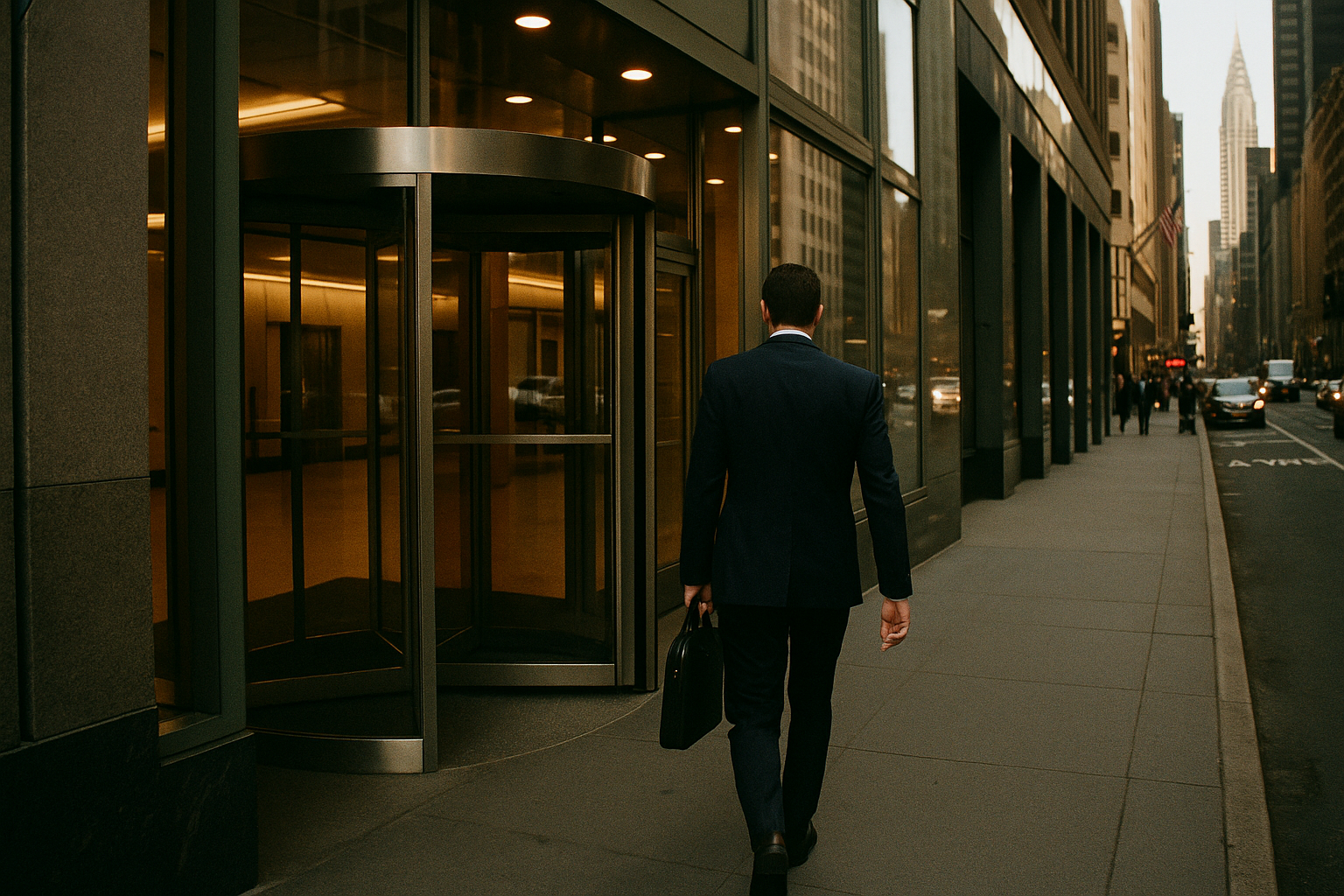The commercial real estate landscape is shifting rapidly, and as a property manager or owner, you must adapt. Office buildings that sat half-empty a couple of years ago are seeing a cautious comeback. Retail centers are reinventing themselves, industrial sites are expanding, and even specialized life science labs face new dynamics.
In 2026, simply offering four walls and a roof is no longer enough, you need to deliver value, experience, and efficiency at every turn. This isn’t just industry hype: one recent survey found 85% of corporate tenants expect landlords to provide enhanced amenities, services, and overall workplace experiences, not just basic space. In other words, your tenants are raising the bar, and meeting their expectations is now critical to winning and retaining their business.
Adapting to these demands might sound challenging, but it’s also a chance for you to stand out. Whether you’re involved in NYC commercial property management or handle properties in other markets, the fundamentals remain the same. By focusing on tenant needs, streamlining building operations, and leveraging modern tools, you can turn these 2026 trends into opportunities.
Remember, keeping a tenant happy is far more cost-effective than finding a new one – losing a commercial tenant costs landlords on average about $32,000 per tenant turnover when you factor in lost rent and re-leasing expenses. The good news is that with the right strategies, you can avoid those losses. Let’s break down how you can thrive in this evolving environment.
The Office Comeback and Rising Expectations
After a few turbulent years, the office sector is showing signs of life. Nationwide, offices are gradually filling up again – net absorption of office space turned positive in late 2024, and leasing activity is projected to grow modestly (~5%) in 2025 as companies rethink their space needs. Major markets like New York City are seeing big leases get signed, even as some West Coast cities lag behind.
This “office comeback” doesn’t mean everything returns to pre-2020 normal, though. In fact, it’s creating a new set of expectations. Companies bringing employees back on-site are looking for quality over quantity: they want offices that are modern, convenient, and engaging. Places that employees want to come into, not have to. This has fueled a “flight to quality,” where trophy-class office spaces with state-of-the-art amenities are commanding premium rents. Tenants are willing to pay more to secure these top-tier spaces because they see a great office as a tool to attract and retain their own talent.
What does this mean for you? If you manage office properties, you’re likely facing high vacancy rates in older or less updated buildings, while that shiny tower down the street is fully leased. As of 2024, the national office vacancy hovered around 19%, and in Manhattan it was above 22%, a historically high level. Yet, not all office buildings are equal in this environment. The ones succeeding are those that offer something special: better ventilation and cleanliness, on-site perks, flexible layouts, or simply a prime location that cuts commuters’ travel time.
As one industry expert noted, today’s tenants are far more selective. They demand high-end finishes, convenience and accessibility in their workspace. Even a brand-new office tower can sit half-empty if it’s in the wrong spot or doesn’t meet modern workforce needs. The takeaway: to capture the office revival, you need to elevate your property’s appeal through strategic upgrades and tenant-centric thinking.
Prioritizing Tenant Experience to Win and
Retain Tenants
If 2026 has a mantra for property owners, it’s this: tenant experience is king. A positive tenant experience isn’t just a “nice extra,” it directly impacts your bottom line. When tenants are satisfied, they stay longer and are more likely to renew leases. When they’re unhappy, you face expensive turnovers. In fact, research shows that replacing a commercial tenant can cost about three times more than retaining one. Think of the costs involved in a turnover: lost rent during vacancy, marketing and broker fees to find a new tenant, build-outs or incentives to get them in, and the time you spend negotiating. All that can easily equal a year or two of rent value gone. Clearly, keeping your current tenants happy pays off.
So how can you enhance tenant experience in practical terms? Start by fostering open communication and responsiveness. Make it easy for tenants to reach you or your team with concerns or maintenance requests, and respond promptly when they do. Little things, like fixing a heating issue the same day or clearly communicating building updates, go a long way toward building trust. From a service standpoint, think about amenities and conveniences that make your tenants’ daily lives better.
For an office building, this could mean ensuring fast, reliable Wi-Fi throughout common areas, providing comfortable lounges or coworking spaces in the lobby, or organizing occasional tenant appreciation events (like a free coffee bar morning or holiday mixer). For a retail center, tenant experience might involve keeping the property well-landscaped and safe, hosting community events that drive foot traffic to the stores, or offering shared marketing efforts to support your retailers. Even in an industrial park, where amenities are not as flashy, it’s about practicality: maintaining clean, well-lit facilities, ample parking for trucks, and perhaps amenities like a food truck day or break area for workers can improve the overall satisfaction of the businesses operating there.
Crucially, listen to your tenants. You might conduct brief surveys or have informal check-ins to ask how things are going. Are there comfort issues? Security concerns? Suggestions for improvements? Showing that you care about their feedback and act on it builds goodwill. And remember that earlier stat: tenants today expect more from landlords in terms of service. If 85% of occupiers want enhanced services and amenities from their landlords, delivering on that will set you apart from competitors. Sometimes improvements can be simple and cost-effective: adding secure bike storage for an office building, creating an online community bulletin for a multi-tenant campus, or partnering with food delivery services to have a designated drop-off/pick-up area in your lobby. These kinds of touches improve day-to-day experience.
Optimizing Building Operations in 2026
Behind every great tenant experience is a foundation of smooth, efficient building operations. Think of operations as the invisible machinery that keeps your property running day in and day out. When done right, it’s almost invisible. Tenants just know that the lobby is clean, the lights and climate control work, the elevators run, and their environment feels safe. If something goes wrong, though, it quickly erodes tenant confidence.
In 2026, optimizing operations is more important than ever because margins are tighter and expectations higher. Many corporate tenants are still focused on cost control (a global survey confirms cost is the top driver for real estate decisions), which means they will gravitate to buildings that run efficiently (lower operating costs can translate to lower CAM charges or at least fewer surprise expenses passed along). At the same time, you can’t cut corners on service quality. So, how do you balance this? By working smarter, not just harder.
First, embrace preventative maintenance as a core practice. A proactive approach to maintenance can save you major headaches and dollars. Schedule regular inspections for critical systems (HVAC, electrical, plumbing, elevators, life-safety systems) before there’s an issue. Replacing an aging fan belt or servicing a boiler in the off-season, for example, can prevent an unexpected breakdown on the coldest day of winter when tenants are in the building. Preventative upkeep not only avoids costly emergency repairs but also minimizes downtime that could disrupt your tenants’ operations. It’s helpful to keep a detailed maintenance calendar and log. Many property managers find that a digital work order system (or a building operations software) ensures nothing slips through the cracks.
Next, look at energy management and building performance. Controlling energy costs is a big part of operations, and it’s an area where technology can make a difference. Installing smart thermostats and sensors, for instance, can optimize heating, cooling, and lighting based on occupancy, saving money and keeping spaces comfortable. Some office and industrial landlords conduct energy audits and then retrofit with LED lighting or more efficient equipment; these investments often pay for themselves through lower utility bills. As a bonus, many tenants appreciate sustainability efforts. In some cities like New York, staying energy-efficient isn’t just a choice but a requirement (due to local regulations on building emissions).
By getting ahead of these mandates, say by upgrading insulation and taking advantage of rebates, you stay compliant and show leadership. Your building’s operations team should also have clear standard operating procedures. From how quickly you respond to a leak, to a building operations checklist for daily cleaning, consistency is key. Well-documented procedures and trained staff or vendors lead to reliable service that tenants can count on.
Security and safety are another crucial part of building operations. Ensure that access controls, surveillance cameras, and alarm systems are functioning and up to date. Regularly review emergency preparedness: do fire drills, update evacuation plans, and communicate these to tenants. In a multi-tenant property, one tenant’s mishap (like a small fire or leak) can affect everyone, so having practiced protocols protects both you and your occupants.
Tenants will feel more secure knowing management has thought through these scenarios. In 2026, health and wellness protocols are also part of operations. For instance, many buildings have adopted enhanced cleaning standards post-pandemic. Maintaining those higher standards of cleanliness in lobbies, restrooms, and shared facilities signals to tenants that you take their well-being seriously.
Lastly, don’t overlook the small operational details that make a big impression. Things like well-maintained landscaping, prompt snow removal, clear signage, and a tidy parking lot or garage contribute to a positive experience. These might seem minor, but they add up to a property that feels cared for. In a competitive market, being known as a landlord who “keeps the building in great shape” is a selling point. It shows professionalism and pride of ownership.
Plus, efficient operations reduce your long-term costs – efficient equipment lasts longer, and a building in good repair retains its value. By 2026 standards, smart operations are essentially a commercial property management best practice that you can’t afford to ignore. Tighten up your ship now, and you’ll reap the benefits in tenant satisfaction and operating income.
Leveraging Technology and Software for
Smarter Management
One of the biggest game-changers for property managers in recent years is technology. If you haven’t already, 2026 is the time to leverage commercial property management software for landlords and modern tech tools to simplify your work. The days of juggling spreadsheets, paper leases, and endless email chains are fading. Today, the best commercial property management software platforms act like mission control for your properties. They let you track maintenance requests, expenses, and even tenant communications all in one place. For you, that means less time spent on manual paperwork and more time focusing on higher-value tasks (like strategizing improvements or building relationships). For example, with a few clicks you can quickly pull up a COI for a vendor, check which work orders are still open, or review maintenance equipment usage over the past month.
What should you look for when choosing software for commercial property management? First, it should be user-friendly for you and your team. A complicated system that nobody wants to use won’t help. Look for a platform that has a clear dashboard and ideally a mobile app, so you can use it on the go (handy when you’re doing property rounds or meeting a tenant).
Next, consider the features: do you need a tenant portal where occupants can submit maintenance tickets or download documents? Many of the best software for commercial property management includes such tenant-facing features, which can greatly enhance the tenant experience. Imagine tenants being able to log in to an app to see updates on their service request or to get building announcements. It makes them feel in the loop and taken care of. Also, look for integration capabilities. Good software can often integrate with accounting systems or building access control systems, which reduces duplicate work. If tenants use the app on their phones for building access, you can also send notifications directly to everyone in the building about announcements, events, and work orders.
Some landlords are using analytics to track patterns, like elevator usage data to optimize elevator maintenance schedules, or foot traffic data in retail centers to know the peak shopping hours. While you don’t need to adopt tech for tech’s sake, strategic use of technology makes your operations more efficient and transparent.
Crucially, technology helps you stay organized and proactive. Property management involves a lot of moving parts, and when you manage multiple properties or a large building, keeping track of everything is a challenge. By using an integrated software system, you create a central source of truth for your team. Everyone knows where to find the lease abstract or the latest insurance certificate, and tasks can be assigned and tracked to completion. No more sticky notes on your desk about the sprinkler inspection, the system will remind you or your facility manager and even keep a record of it. This level of organization not only saves time but also ensures nothing falls through the cracks, which in turn keeps your tenants happy and your owners/investors confident. In short, leveraging property management software is about working smarter. The right tools can transform your commercial property management from a reactive juggling act into a well-orchestrated operation that impresses tenants and makes your life easier.
Stay Ahead by Staying Proactive
As you move into 2026, strong commercial property management means being proactive, responsive, and focused on people. Tenants expect more. They want better service, faster response, and a more thoughtful experience. When you deliver that consistently, you build trust, reduce turnover, and strengthen your portfolio.
Today’s market rewards properties that operate efficiently and keep tenants happy. Whether you are managing office, retail, industrial, or life science buildings, your ability to meet rising expectations will set you apart. It starts with having the right systems, processes, and mindset in place to stay ahead and solve problems before they grow.
This is where Cove comes in. Cove gives you one platform to run operations, manage service requests, and keep tenants informed. You gain real-time visibility, clear workflows, and tools your team can rely on every day. With Cove, you stay organized, responsive, and in control.
Staying ahead means listening, improving, and taking action with purpose. When you combine that mindset with the right technology, you deliver a better experience at every step. Tenants feel supported. Owners see results. And you’re prepared for whatever comes next.

.png)





